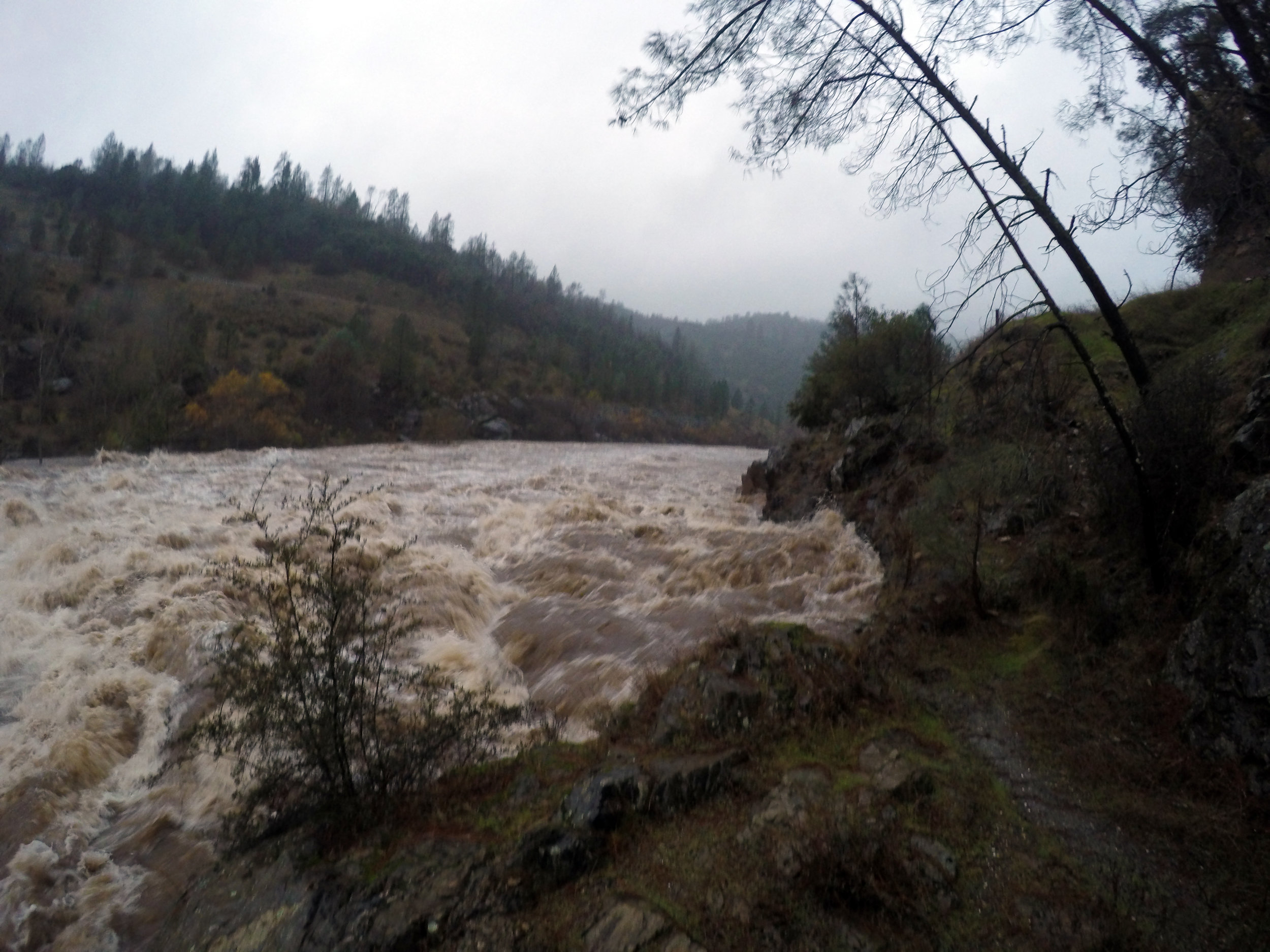High-Water Safety: Guidelines for Rafting Swollen Rivers
Staying Safe on Flooded Rivers
Big winters create big runoff. Whitewater rafters are looking at epically high water! Because increased flows dramatically change rivers and require a redoubling of our ongoing efforts to keep our trips safe, I thought I would share some thoughts about high-water safety:
High-Water Rigging and Gear
Consider rigging a flip line across the bottom of your boat. Rig grab lines around the perimeter or at least along the straight sides of your boat. Dress yourself and your crew for a long, cold swim. A big essential: Use brightly colored high-float lifejackets with at least 22 pounds of buoyancy! High-float jackets stand a much better chance of bringing swimmers to the surface of foamy, aerated, turbulent water. No low-float jackets!
Re-Train on High Flows
Even if you are familiar with a run at lower flows, consider re-training on high flows before taking clients or friends on high–water runs.
Routes Change
Holes and lines which are runnable at moderate flows may become too dangerous, while new safer routes—sometimes along the sides, sometimes down the middle—often open up.
Re-Emphasize the Basics
Keep your boat right side up and keep your people in the boat. Give extra thorough safety talks and in-boat training. Because mishaps and the resultant pandemonium can occur anytime, including the instant you leave the put-in eddy, take extra time at put in to review with your crew how to paddle well, stay in the boat, dig through holes, avoid entanglement (keep lines coiled, etc.), and, if swimming, avoid and cope with holes and strainers. More on this below.
Keys to Keeping People in the Boat
Teach them how to sit and how to brace their feet. Teach, practice and use the commands “lean in” and "lean in, get down.” In addition, consider rigging middle-of-thwart, top-of-thwart handholds, and, when you find yourself feeling overwhelmed, such as when spinning sideways down vertical waterfalls, yell, “HOLD ON, LEAN IN, GET DOWN!”
Plan Ahead & Begin Moves Early
Err on the side of caution. Look far ahead and start early to miss obstacles, which come at you much, much faster in high water.
Tight Boat Spacing
To keep swims short, tighten spacing between boats, often down to between two and five boat lengths.
Downstream Safety Net
Perhaps the biggest risk of high water is having swimmers flush away downstream to drown in a succession of big holes and violent turbulence that can extend for miles. To prevent this, maintain a downstream safety net by placing either the strongest crews and guides (possibly with oar/paddle rigs) or dedicated safety boats (such as kayaks and/or big cats) in lead positions.
Multiple Swimmers & Throw Bags
Multiple, simultaneous swimmers (due to, say, tube stands and flips) present an especially serious challenge in high water. Of course, introducing lines into any situation carries risk of entanglement, etc. But sometimes, especially if you have multiple swimmers spread out in various directions from your boat, a well-deployed toss bag can save lives. If all of your swimmers are in the same direction from your raft (for example, all are to river left or all are downstream from your boat), you may be able to simply power toward them and pick them up one by one without introducing a rope into the melee. If, however, you have people in the water, say, both upstream and downstream from your boat, a toss bag thrown to both the upriver and downriver people could keep them all “attached” to your boat while first you slow to pick up the upstream swimmers and then reel in the downstream people. (In some situations, this might be done by first pulling enough line out of the bag to throw to the upstream people, and then heaving the bag itself and the remaining line down past the downstream-most swimmer.)
Spotters
Consider asking one or more of your crew to be spotters for (i.e., to keep a continuous eye on) swimmers in one direction, if you are forced to focus first on rescuing swimmers in another direction. Note: It is a good idea to talk about these scenarios early on with your crews, so they know what a spotter is, know what to do if thrown a toss bag, etc.
Strainer-Infested Banks Are Dangerous
One of the mental resets required by high water is to stop thinking of the banks as representing safety. When high flows race through trees and brush on either bank, the banks are no longer a refuge, but are super dangerous. Thus, when the banks are lined with strainers, stopping may require that you bide your time out in mid river, wait, and with careful timing start early to develop momentum into the next big eddy.
Teach Self-Rescue
With extra thoroughness teach crews what to do if they find themselves in the water: Keep feet up and do not try to stand up in water over knee-deep–-entrapment can happen in high as well as low water. And, above all, emphasize the mindset of self rescue.
Review Your Signals
Especially those having to do with swimmers, someone missing and river emergencies. See pages 107 to 139 of The Guide’s Guide Augmented: Reflections on Guiding Professional River Trips.
These thoughts are not meant to be the last word on this vital subject. This is one contribution to an important conversation. I would welcome hearing your thoughts, other perspectives, etc. Wishing you safe and joyous boating, Bill McGinnis
William McGinnis wrote: Whitewater Rafting, The Guide’s Guide Augmented: Reflections on Guiding Professional River Trips, Whitewater: A Thriller, Disaster on the Clearwater: Rafting Beyond the Limit, etc. See WilliamMcGinnis.com. Bill can be reached at: bill@whitewatervoyages.com.








